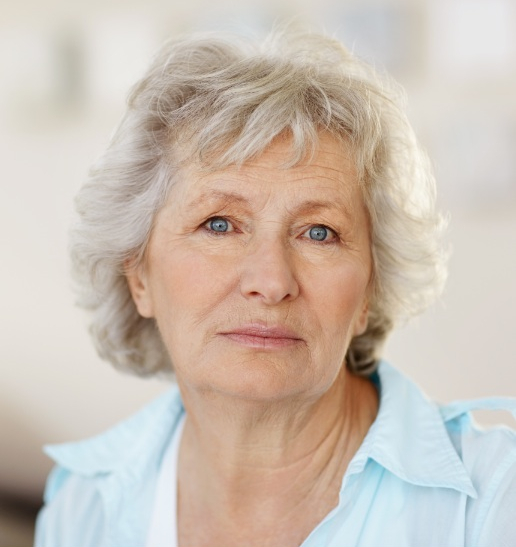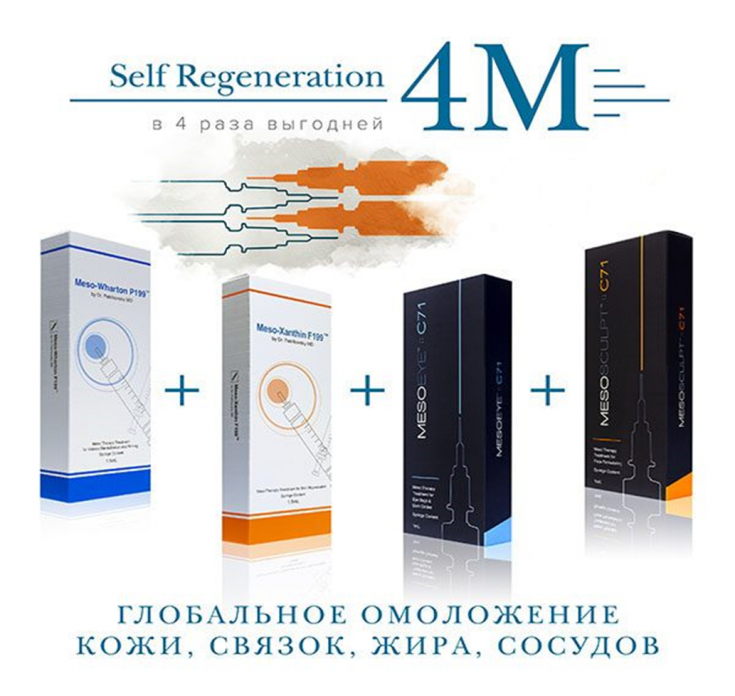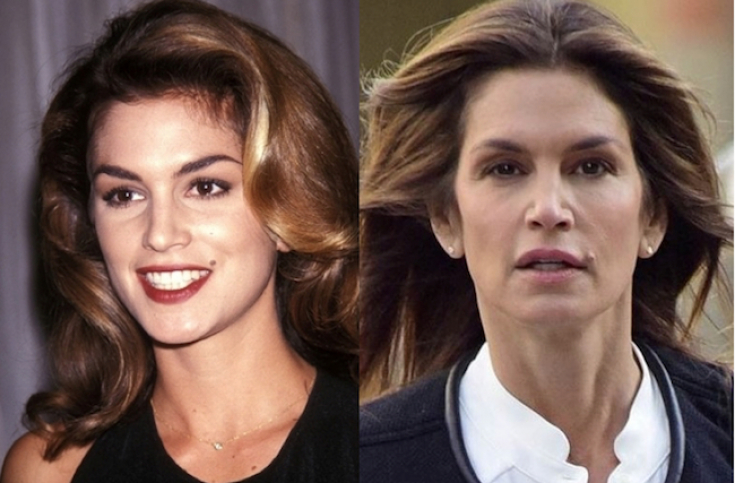Effective correction of age-related changes is impossible without determining the patient's ageing morphotype.
Knowledge of the features of the main aging morphotypes – tired, deformed, finely wrinkled and muscular – necessary for a specialist to subsequently select the most effective tactics.
This article on estet-portal.com describes the characteristic features of different aging morphotypes, as well as a differentiated approach to choosing the optimal self-regeneration technique in each individual case.
The concept of self-regeneration: launching processes of self-renewal and self-rejuvenation
The question of the possible activation of the processes of self-renewal and self-rejuvenation of the body has been of interest to humanity since ancient times, but we have only recently managed to really get closer to the truth.
With the latest advances in regenerative medicine, the concept of so-called self-regeneration was developed and soon gained general acceptance.
The concept of self-regeneration involves the induced launch of endogenous mechanisms of self-renewal and self-rejuvenation of the body due to the stimulation of its own stem cells.
For more information about the concept of self-regeneration (SelfRegeneration) you can find in the article: SelfRegeneration: the secrets of self-healing of the skin
Today, there are three main self-regeneration techniques on the market of the beauty industry: 2M, 4M and Bungee (ed. - Emettm).
To obtain the best results in the correction of age-related changes, the doctor should choose the most appropriate self-regeneration technique, depending on the types of aging of the patient's face. How to do it? Read further in the article.
Follow us on Facebook
The tired morphotype is the equivalent of normal physiological aging

The tired aging morphotype is the most favorable in terms of possible aesthetic correction of age-related changes. It's sort of the equivalent of normal physiological aging.
Most often, the tired morphotype is observed in thin patients with an oval face shape, as well as normal or dry skin.
The tired aging morphotype is characterized by the presence of the following features:
1. Moderate gravitational ptosis of the tissues of the lower third of the face;
2. Pronounced "dark circles" in the infraorbital region;
3. Decrease in muscle tone and elasticity of the skin of the face;
4. Moderate deepening of the nasolabial folds;
5. Puppet wrinkles formation.
The above age-related changes give the face a kind of "tired" look. view. They are especially pronounced in the afternoon and soften somewhat after a good night's rest.
In the development of changes characteristic of a tired face morphotype, the leading role is played by a violation of lymphatic drainage and, as a result, the development of characteristic pastosity and "dark circles".
Taking into account the causes of development and clinical features of this aging morphotype, estet-portal.com recommends using the 4M self-regeneration technique in order to correct age-related changes.

The 4M self-regeneration technique consists in the simultaneous administration of four highly effective drugs:
1. Meso-Wharton P199 (MesoWharton) – promotes the proliferation and differentiation of mesenchymal stem cells, thereby initiating the processes of natural facial skin rejuvenation;
2. Meso-Xanthin F199 (Mezoxanthin) – triggers and potentiates the epigenetic mechanisms of regulation of the processes of self-regeneration of tissue structures of the face, thereby "programming" skin for active self-renewal and rejuvenation;
3. MesoEye C71 (Mesoay) – aimed at correcting age-related changes in the periorbital region;
4. MesoSculpt C71 (Mesosculpture) – contributes to the remodeling of facial contours due to a decrease in the severity of subcutaneous fat.
The 4M self-regeneration procedure involves self-renewal of all tissue layers of the face: skin, ligaments, fat and blood vessels.
Already after the first procedure, there is a noticeable decrease in edema and an improvement in the severity of facial contours. Thanks to the improvement of lymphatic circulation and the initiation of self-regeneration processes, the skin acquires an even tone, becomes more youthful and radiant in appearance.
Deformation morphotype of aging: incredible possibilities of self-regeneration technique

Deformation morphotype of aging is most typical for representatives of the Slavic and Arab peoples.
"Heavy Face" due to the pronounced subcutaneous fat, double chin, overhanging cheeks and skin folds on the neck – characteristic features of the deformation morphotype of aging.
At the same time, there is a tendency to swelling of the face due to the growing state of lymphostasis.
A well-developed layer of subcutaneous fat "pulls"; facial tissues down, giving the impression of sagging cheeks – bryley.
Deformation morphotype of aging is the most difficult to correct aesthetically, requiring intensive and comprehensive cosmetic treatment.
Among the available self-regeneration techniques for deformational aging morphotype, the 2M procedure is the method of choice.

The 2M self-regeneration technique (combination of MesoEye C71 and MesoSculpt C71) is the method of choice for correcting age-related changes in patients with deformed aging morphotype.
Effective drug combinations open up new possibilities for self-regeneration
The use of a combination of MesoEye C71 and MesoSculpt C71 products improves lymphatic drainage, a noticeable decrease in pastosity and "heaviness" of the skin. face, as well as the correction of «dark circles» under the eyes.
At the same time, MesoEye C71 is aimed at correcting age-related changes in the periorbital region. MesoSculpt C71, in turn, improves facial contours by reducing pastosity and reducing the thickness of the subcutaneous fat of the face.
Peculiarities of fillers and biorevitalizants for wrinkle correction
Fine wrinkled type of aging: a differentiated approach to self-regeneration

For the fine wrinkled aging morphotype, the formation of many wrinkles on the face is characteristic: from the smallest to quite deep.
At the same time, there is a decrease in the volume of subcutaneous adipose tissue, resorption of bone structures: the face looks like “sclerotonized”.
To correct age-related changes in this case, the ideal solution for a cosmetologist is to use the Bungee self-regeneration technique.
The Bungee self-regeneration technique involves 2-level injection of Meso-Wharton P199: into the dermis and hypodermis. In the first case, a needle is used, in the second – cannula.
The Bungee procedure is aimed at activating the processes of migration, proliferation and differentiation of the skin's own stem cells. Impact on two layers of facial tissues – dermis and hypodermis – helps to improve the elasticity of not only the skin, but also the ligamentous apparatus, thanks to which we get amazing rejuvenation results.
Already after the first Bungee procedure, the skin looks more toned and youthful, and the severity of wrinkles is noticeably reduced. The Bungee procedure is also suitable for the correction of age-related changes in the muscular morphotype of aging, which is discussed in more detail later in the article.
Muscular type of aging: main features and methods of correction
The muscular morphotype of aging is characteristic of patients with pointed features and a rectangular face, more common among representatives of the Asian race and somewhat less common – residents of Eastern European countries.
Such patients naturally have well developed mimic muscles and a very thin layer of facial subcutaneous fat.

The following aesthetic changes are observed with age:
1. Cheekbones become more pronounced, while cheeks – sink;
2. Ptosis of the upper eyelids and marionette lines develop;
3. Pigmentation disorder of the skin of the face is possible;
4. The nasolabial folds are moderately expressed.
Obviously, with this aging morphotype, the mere effect on the dermis is not enough – activation of cells of more deeply located structures of facial tissues is necessary.
The Bungee Technique, which involves the activation of mesenchymal stem cells of the deep layers of the face, is the method of choice for the muscular morphotype of aging. It makes it possible to obtain a quick and lasting effect in a minimum number of procedures.
Thus, when choosing a self-regeneration technique, a cosmetologist must necessarily take into account the aging morphotype of the patient's face. Thanks to this differentiated approach, you can achieve the best rejuvenation results in the minimum number of treatments.
Thank you for staying with estet-portal.com. Read other interesting articles in the "Cosmetology" section. You may also be interested in Biosupplements with active ingredients and their impact on health







Add a comment